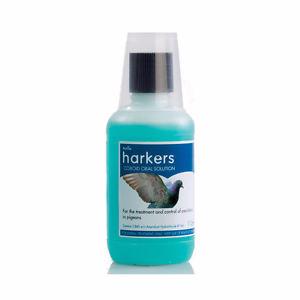Coccidiosis is a parasitic disease of the intestines that is caused by a coccidian protozoon. Different types of the parasite effect different animals and can spread from one to another through contact with droppings as well as with infected tissue. One of the main symptoms is diarrhoea but in many cases, the parasite causes no symptoms that are noticeable, while weakening the immune system from within. Infections can occur in birds, humans and livestock but generally, they are specific to one species. The resulting condition is often referred to as ‘going light’ and is most commonly associated with birds like Greenfinch.
Types of parasite
The condition can be seen often in puppies who inherit it through contact with their mothers dropping and have too weak of an immune system to combat it. Symptoms show with mucus and blood in their droppings, a poor appetite, vomiting and dehydration. If it isn’t treated, it can be fatal. Coccidiosis is quite common in chickens where it can be fatal or at least compromise the digestive system. The parasites that affect birds are from the Eimeria genus and these also affect poultry and cattle. Particularly, the Atoxoplasma is the type that affects finches.
How the parasite spreads
Unlike many bacteria, which just divides and replicates, the coccidiosis protozoa have eggs. When a bird becomes infected by coming into contact with infected droppings or tissues, these protozoa latch into the cell walls of the intestine and create eggs that are called oocysts. The oocysts continue to spread to other tissues, causing damage to the cells and leading to moisture and blood leaking out.
These oocysts are also very resilient and can live outside the host’s body for some time, waiting for another victim to come along. They do this by using a protective coating around themselves. But they are also invisible to the naked eye so cannot be seen. This multiplication and spread happens most often during the warmest months of the year.
Typically, birds don’t pass the infection to their young when crop feeding or if they do, there seems to be some natural immunity that the chicks gain through their crop milk. But once the chicks leave the nest and begin to peck at the world around them, they are more likely to pick up the dormant oocysts and become infected.
Coccidiosis Infections
Once the oocysts enter the bird’s system, they go into a development stage. This is when they cause damage to the gut which can sufficiently severe to prevent the bird from eating or drinking. It can also damage the kidneys, spleen, liver and even the brain. Once this kind of damage has been done, the bird rarely recovers.
Typically, symptoms of coccidiosis are when the bird is lethargic, sitting with its feathers puffed up. It won’t move around much and will seem to have difficulty feeding. It may nibble at seeds but not actually eat anything. Birds can remain in this condition for days before dying while others succumb very quickly. Young birds rarely recover through if it does, it will rarely suffer the condition again as an older bird, suggesting some possible immunity on recovery. The most dangerous time for birds is between fledging and their first moult.
 Up to now, there is no guaranteed way to rid birds of the infection but sulphur drugs are the most common method used to deal with it. The complex nature of the parasite is part of the reason that treating it can be so difficult but these drugs have been found to prevent the condition from developing in young birds though not eradicating it.
Up to now, there is no guaranteed way to rid birds of the infection but sulphur drugs are the most common method used to deal with it. The complex nature of the parasite is part of the reason that treating it can be so difficult but these drugs have been found to prevent the condition from developing in young birds though not eradicating it.
For this reason, sulphur drugs are often used as a preventative rather than a cure. Young birds are given the drugs to prevent them from contracting it rather than to treat them once they do. There are various products available that fall within this category of drugs, such as Harker’s Coxoid, which is water soluble and is added to drinking water for 7 days. Others include Intradine and Coxi-Plus as well as a product brought from the continent called ESB3. All are administered through water as this speeds up the reaction time.
For more on the subject, see http://www.nativebirds.co.uk/index.php?option=com_content&view=article&id=28&Itemid=28
Extra note – a tip from top finch keeper Ian Morley via Waxbills, Weavers & Exotic Finches Facebook group: The Sulpha drugs described in this article work by flushing through the gut to clean it but the disease also gets into the organs of the bird where sulpha drugs are not effective. Baycox is said to be totally effective in eradicating the disease from the organs too. Two problems with this drug, I believe it is not licensed in the UK ? and secondly is very difficult to administer the correct doseage to small birds like finches as it can be fatal if overdosed. (it is meant for use on poultry). A shame they didn’t develop an effective way to use it on small for birds.
If you have any experience (positive or negative) with treating the condition, I’d love to hear about it too to help us all!
Vetafarm has a treatment in Australia it’s called. Coccivet can treat all the organs of the bird. Can order from most pet stores in Australia.
That’s good to know too thanks Nate